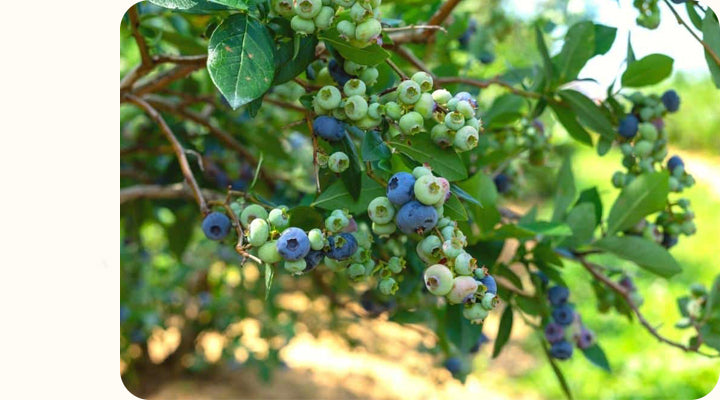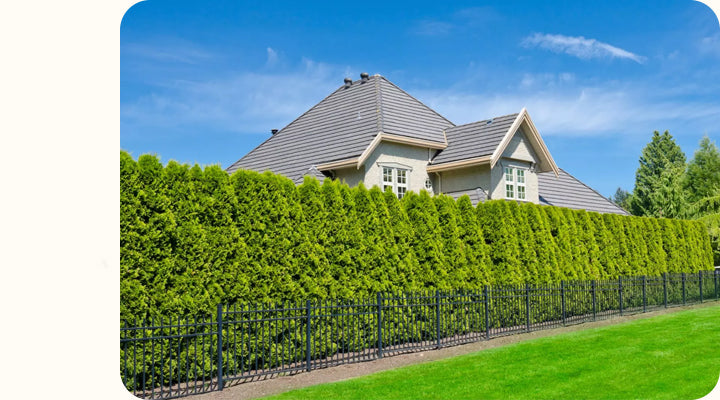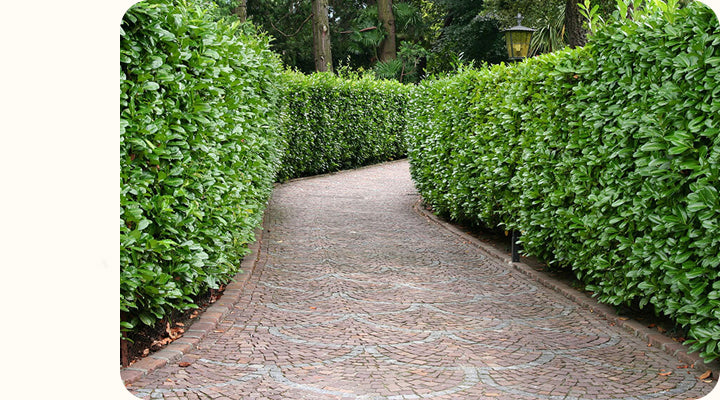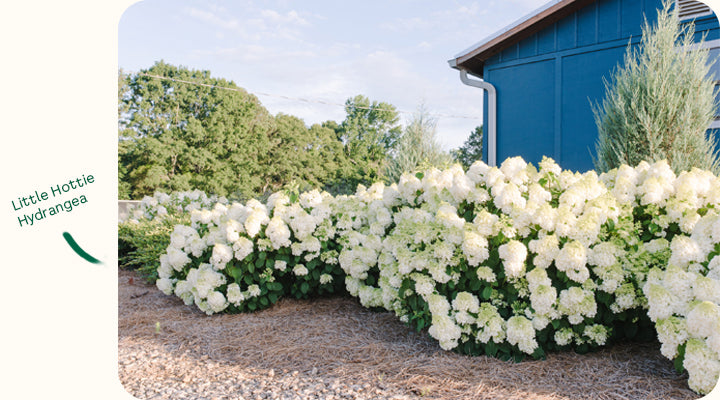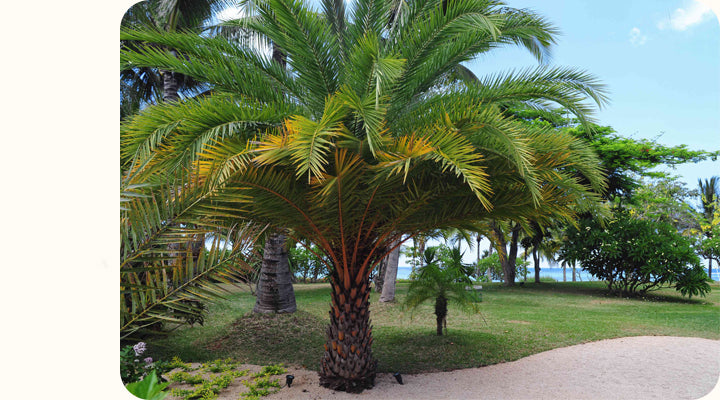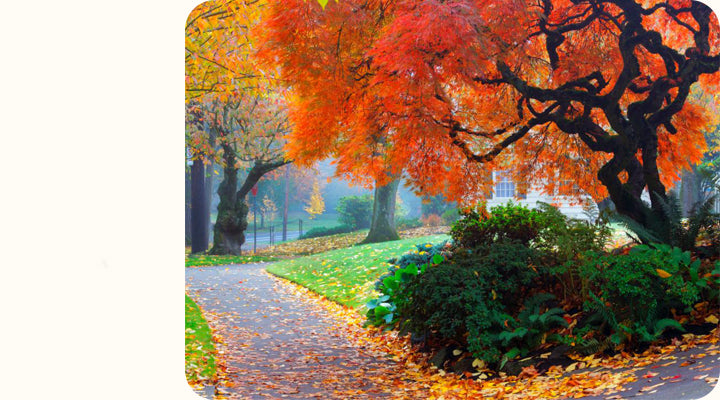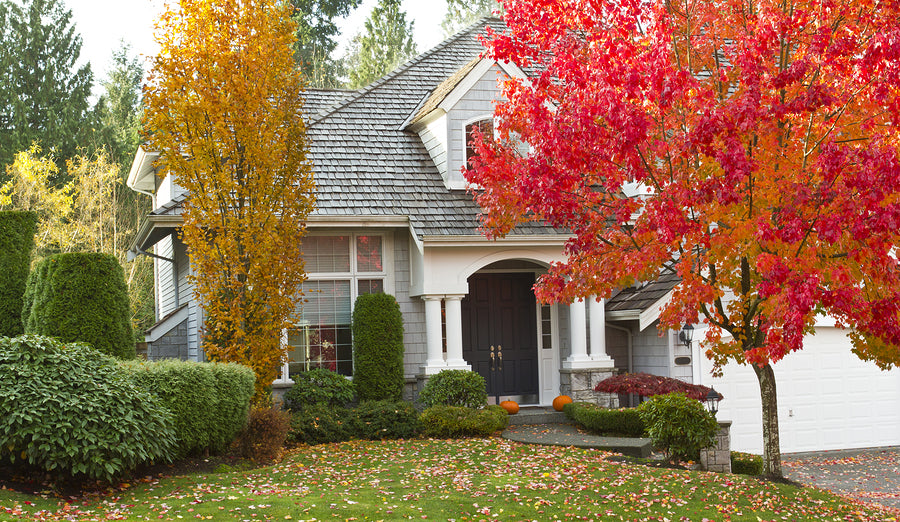Fall, with its crisp air and vibrant colors, is a magical time of the year. As the summer heat starts to wane and the days become shorter, it's the perfect opportunity to refresh and rejuvenate your garden. Whether you're a seasoned gardener or a novice looking to try your hand at planting, fall offers a unique chance to showcase nature's beauty in your own backyard.
In this comprehensive guide, we will explore the best plants for fall, helping you make informed decisions about what to plant and how to create a stunning autumnal landscape. From majestic trees to charming shrubs, resilient perennials to colorful annuals, we'll cover a wide range of options to suit every preference and gardening style.
Importance of Fall Gardening
Fall gardening is often overlooked, but it holds immense significance for both the health and aesthetics of your outdoor space. While spring is typically associated with planting and rejuvenation, fall planting sets the stage for a bountiful and beautiful garden in the following year.
One of the key advantages of fall gardening is the cooler temperatures. As the scorching heat of summer fades away, plants experience less stress and have a better chance to establish their roots before winter arrives. The soil is still warm from the summer sun, providing an optimal environment for root growth. This allows plants to become stronger and more resilient, leading to healthier growth in the spring.
Benefits of Planting in the Fall
Fall planting offers numerous benefits that extend beyond the immediate season. By taking advantage of the cooler weather and soil conditions, you can set the stage for a thriving garden in the upcoming year. Here are some key advantages of planting in the fall:
-
Extended Root Development: When you plant in the fall, plants have ample time to establish their root systems before the dormant winter period. This ensures they are well-prepared to absorb nutrients and water when spring arrives.
-
Reduced Watering: Cooler temperatures and increased rainfall during the fall season mean that plants require less watering compared to the hot and dry summer months. This not only saves you time and effort but also promotes water conservation.
-
Fewer Pest Problems: Many common garden pests, such as aphids and caterpillars, are less active in the fall. By planting during this time, you can minimize the risk of pest damage and reduce the need for chemical interventions.
-
Stunning Fall Colors: Fall is renowned for its breathtaking foliage colors, and by selecting the right plants, you can enhance the natural beauty of the season in your garden. Vibrant reds, oranges, and yellows will create a visual spectacle that delights both you and your visitors.
Factors to Consider for Fall Planting
Before diving into the best plants for fall, there are a few factors to consider to ensure successful planting and growth. By understanding these considerations, you can make informed choices that align with your garden's specific needs.
1. Hardiness Zone: Different plants have different temperature requirements. Familiarize yourself with your region's hardiness zone to select plants that can thrive in your specific climate conditions.
2. Planting Time: Fall is a broad term that encompasses several months, so it's important to determine the optimal planting time for each type of plant. Some plants prefer to be planted early in the fall, while others can be planted as late as November.
3. Soil Preparation: Before planting, it's essential to assess and prepare your soil. Conduct a soil test to determine its pH level and nutrient composition. This will help you identify any deficiencies and enable you to amend the soil accordingly.
4. Sunlight Requirements: Consider the amount of sunlight your garden receives during the fall season. Some plants thrive in full sun, while others prefer partial or even full shade. Choose plants that align with your garden's light conditions.
5. Maintenance Needs: Different plants have varying maintenance requirements. Consider the amount of time and effort you are willing to invest in caring for your garden. Some plants may require regular pruning, deadheading, or protection from frost.
By taking these factors into account, you can ensure that the plants you choose for your fall garden are well-suited to your unique gardening environment.
Overview of the Best Plants for Fall
Now that we understand the importance and benefits of fall gardening, let's delve into the exciting world of the best plants for fall. To make your selection process easier, we have categorized them into four main groups: trees, shrubs, perennials, and annuals.
In the following sections, we will explore each category in detail, highlighting the most popular and reliable options for creating a stunning fall landscape. From the majestic beauty of maple trees to the vibrant blooms of chrysanthemums, there is a wide array of plant choices to suit every taste and preference.
So, let's embark on this horticultural journey together and discover the best plants for fall that will transform your garden into a breathtaking autumnal haven. Get ready to embrace the season's natural beauty and create a lasting impression with your fall planting endeavors.
Best Trees for Fall
Trees are the backbone of any garden, providing shade, structure, and stunning visual impact. When it comes to fall planting, certain tree species stand out for their ability to showcase the season's vibrant colors. Let's explore some of the best trees to consider for your fall garden:
Maple Trees
Maple trees are renowned for their stunning foliage colors, making them a popular choice for fall landscapes. With their iconic leaf shape and vibrant hues, they add a touch of elegance and beauty to any garden. Here are a few notable maple tree varieties to consider:
-
Sugar Maple (Acer saccharum): Known for its brilliant orange, red, and yellow leaves, the sugar maple is a true showstopper in the fall. Its dense canopy provides ample shade during the hot summer months and transforms into a kaleidoscope of colors in the autumn.
-
Red Maple (Acer rubrum): The red maple is prized for its brilliant scarlet foliage, which creates a striking contrast against the greenery of your garden. Its adaptability to various soil types and its tolerance for wet conditions make it a versatile choice for many regions.
-
Japanese Maple (Acer palmatum): Japanese maples are renowned for their delicate, lacy leaves and stunning range of fall colors. From fiery reds to vibrant oranges and golden yellows, these trees add a touch of elegance and grace to any garden.
Dogwood Trees
Dogwood trees are known for their beautiful flowers, but they also offer exceptional fall foliage. These small to medium-sized trees are perfect for adding color and interest to your autumn landscape. Consider these dogwood tree varieties for their fall beauty:
-
Flowering Dogwood (Cornus florida): With its iconic white or pink blossoms in the spring, the flowering dogwood also boasts gorgeous reddish-purple foliage in the fall. Its vibrant leaves create a visual spectacle, especially when paired with the tree's distinctive red berries.
-
Kousa Dogwood (Cornus kousa): The kousa dogwood is a versatile tree that offers stunning fall colors. Its leaves turn shades of vibrant red, orange, and purple, creating a breathtaking display. Additionally, it produces attractive raspberry-like fruits that add further interest to the tree.
Oak Trees
Oak trees are known for their grandeur and longevity, and they also make wonderful additions to a fall garden. Their sturdy presence and rich autumnal colors are sure to make a statement. Consider these oak tree varieties for their fall beauty:
-
Red Oak (Quercus rubra): The red oak is a majestic tree with impressive fall foliage. Its leaves turn shades of red, orange, and brown, creating a warm and inviting atmosphere in your garden. This tree is also a valuable resource for wildlife, providing acorns for birds and small mammals.
-
White Oak (Quercus alba): The white oak is a symbol of strength and endurance. Its leaves turn a beautiful reddish-brown in the fall, adding a touch of rustic charm to your landscape. This tree is also known for its longevity, with some specimens living for several hundred years.
Birch Trees
Birch trees are known for their graceful appearance and distinctive bark. While their foliage may not exhibit the same vibrant colors as maples or oaks, they still contribute to the overall beauty of a fall garden. Consider these birch tree varieties for their unique appeal:
-
River Birch (Betula nigra): The river birch is a fast-growing tree with attractive peeling bark in shades of cream, orange, and brown. Although its leaves turn a subtle yellow in the fall, it adds textural interest and architectural elegance to your garden.
-
Paper Birch (Betula papyrifera): The paper birch is renowned for its striking white bark, which provides a stunning contrast to the autumn landscape. While its foliage turns a pale yellow in the fall, the tree's bark remains a focal point, adding visual interest and a touch of elegance.
By incorporating these beautiful tree species into your fall garden, you can create a captivating display of colors that will leave you in awe of nature's wonders. From the fiery reds of the sugar maple to the delicate white bark of the paper birch, these trees will undoubtedly enhance the beauty of your outdoor space.
Best Shrubs for Fall
Shrubs play a vital role in creating structure and visual interest in a garden. When it comes to fall planting, there are several shrubs that not only provide beautiful foliage but also offer stunning blooms that complement the season. Let's explore some of the best shrubs to consider for your fall garden:
Burning Bush (Euonymus alatus)
The burning bush is a popular shrub known for its vibrant fall foliage. Its leaves turn a brilliant shade of fiery red, creating a dramatic and eye-catching display in your garden. This shrub is relatively low-maintenance and thrives in a variety of soil conditions. With its stunning autumn colors, the burning bush is a must-have for any fall landscape.
Virginia Sweetspire (Itea virginica)
The Virginia sweetspire is a versatile shrub that provides interest throughout the year, including the fall season. In autumn, its foliage transforms into shades of fiery red, orange, and purple, adding warmth and richness to your garden. Additionally, this shrub produces fragrant, white flower spikes in the summer, attracting butterflies and other pollinators.
Witch Hazel (Hamamelis virginiana)
Witch hazel is a unique shrub that offers a burst of color during the fall months. Its spidery, fragrant flowers bloom in shades of yellow, orange, and red, providing a striking contrast against the backdrop of changing leaves. This shrub thrives in partial shade and well-drained soil, making it an excellent choice for woodland gardens or shaded areas.
Beautyberry (Callicarpa americana)
The beautyberry is a show-stopping shrub that truly lives up to its name. In the fall, its branches become adorned with clusters of vibrant purple berries, creating a stunning visual spectacle. These berries not only add a pop of color to your garden but also provide a valuable food source for birds during the colder months. The beautyberry thrives in full sun to partial shade and is relatively low-maintenance.
Bluebeard (Caryopteris x clandonensis)
Bluebeard is a compact and versatile shrub that offers beautiful blue flowers during the fall months. Its delicate blossoms create a striking contrast against its silvery-green foliage, adding a touch of elegance to your garden. This shrub is also a magnet for butterflies and bees, making it a wonderful addition to pollinator gardens. Bluebeard prefers full sun and well-drained soil.
By incorporating these stunning shrubs into your fall garden, you can create a tapestry of colors and textures that will captivate the eye and enhance the overall beauty of your outdoor space. Whether you choose the fiery red foliage of the burning bush or the vibrant purple berries of the beautyberry, these shrubs will undoubtedly be the stars of your autumn landscape.
Best Perennials for Fall
Perennials are a fantastic addition to any garden, as they come back year after year, adding color and texture to your landscape. When it comes to fall gardening, there are certain perennial plants that shine during this season, offering stunning blooms and foliage. Let's explore some of the best perennials to consider for your fall garden:
Chrysanthemums (Chrysanthemum spp.)
Chrysanthemums, commonly known as mums, are the quintessential fall flowers. With their vibrant colors and abundant blooms, they add a burst of beauty to any autumn garden. Available in a wide range of colors, from rich yellows and oranges to deep purples and reds, mums are incredibly versatile. They thrive in full sun and well-drained soil, making them an excellent choice for borders, containers, or even as cut flowers for indoor arrangements.
Asters (Aster spp.)
Asters are another popular choice for fall gardens, known for their daisy-like flowers and stunning hues. These perennials come in various shades of purple, pink, and white, providing a soft and delicate touch to your garden. Asters also attract butterflies and other pollinators, making them a valuable addition to any pollinator-friendly garden. They prefer full sun to partial shade and well-drained soil, and they can be used in borders, rock gardens, or as groundcover.
Sedums (Sedum spp.)
Sedums, also known as stonecrops, are hardy perennials that truly shine in the fall. Their succulent leaves and clusters of tiny star-shaped flowers add texture and interest to the garden. Sedums come in a range of colors, including shades of pink, red, and purple, and they are known for their ability to attract butterflies. These low-maintenance plants thrive in full sun and well-drained soil, making them ideal for rock gardens, borders, or as groundcover.
Heleniums (Helenium spp.)
Heleniums, sometimes referred to as sneezeweeds, are striking perennials that bloom in the late summer and early fall. Their vibrant, daisy-like flowers come in shades of yellow, orange, and red, adding warmth and cheer to your garden. Heleniums are also loved by pollinators, particularly bees and butterflies. These perennials prefer full sun to partial shade and well-drained soil, and they can be used in borders, cottage gardens, or as cut flowers.
Goldenrod (Solidago spp.)
Goldenrod is a native perennial that is often unfairly associated with allergies, as its pollen is not typically airborne. This hardy plant features clusters of bright yellow flowers that bring a touch of sunshine to your fall garden. Goldenrod is highly attractive to pollinators, particularly bees and butterflies. It thrives in full sun and well-drained soil, making it a versatile addition to borders, meadows, or naturalized areas of your garden.
By incorporating these stunning perennials into your fall garden, you can create a tapestry of colors and textures that will continue to delight year after year. Whether you choose the vibrant blooms of chrysanthemums or the delicate beauty of asters, these perennials will add a touch of magic to your autumn landscape.
Best Annuals for Fall
While perennials provide long-lasting beauty in the garden, annuals offer an opportunity to introduce vibrant colors and fresh blooms that can be enjoyed throughout the fall season. Whether you're looking to fill in gaps in your existing garden or create eye-catching displays in containers, these annuals are sure to impress:
Pansies (Viola x wittrockiana)
Pansies are beloved for their cheerful faces and wide range of colors, making them an excellent choice for fall planting. These cool-season annuals come in shades of purple, yellow, orange, pink, and white, adding a burst of color to your garden beds or containers. Pansies are known for their ability to withstand cooler temperatures and even light frosts, making them a reliable choice for fall gardens. They prefer full sun to partial shade and well-drained soil, and they can be used in borders, containers, or even as groundcover.
Ornamental Kale and Cabbage (Brassica oleracea)
Ornamental kale and cabbage are not only edible but also provide stunning foliage colors that intensify as the temperatures drop. Their frilly leaves come in shades of pink, purple, green, and white, adding texture and visual interest to your garden. These hardy annuals thrive in cool weather and can withstand light frosts. They prefer full sun and well-drained soil, making them a fantastic addition to containers, borders, or even as a centerpiece in a fall-themed garden.
Snapdragons (Antirrhinum majus)
Snapdragons are charming annuals that offer vertical interest and a wide range of colors. Their unique, tubular flowers resemble the snout of a dragon and come in shades of pink, red, yellow, orange, and white. Snapdragons are known for their ability to bloom well into the fall season, adding a touch of whimsy to your garden. They prefer full sun and well-drained soil, and they can be used in borders, containers, or even as cut flowers for floral arrangements.
Calendula (Calendula officinalis)
Calendula, also known as pot marigold, is a delightful annual that blooms in shades of orange and yellow. Its vibrant flowers not only add a pop of color to your garden but also attract beneficial insects, such as bees and butterflies. Calendula thrives in cooler temperatures and can withstand light frosts. It prefers full sun to partial shade and well-drained soil. This versatile annual can be used in borders, rock gardens, or even as a companion plant to vegetables.
Dusty Miller (Senecio cineraria)
Dusty miller is a unique annual that offers silvery-gray foliage, adding a touch of elegance and texture to your fall garden. Its soft, velvety leaves provide a beautiful contrast to other plants and can act as a backdrop for vibrant blooms. Dusty miller thrives in cooler temperatures and can tolerate light frosts. It prefers full sun and well-drained soil, making it a great addition to borders, containers, or even as a filler plant in floral arrangements.
By incorporating these stunning annuals into your fall garden, you can create vibrant displays that will continue to thrive until the first frost. Whether you choose the cheerful faces of pansies, the bold foliage of ornamental kale, or the whimsical blooms of snapdragons, these annuals will add a burst of color and freshness to your autumn landscape.
Conclusion
As the vibrant colors of summer fade away, fall presents an opportunity to embrace the changing seasons and create a stunning garden filled with the beauty of autumn. By carefully selecting the best plants for fall, you can transform your outdoor space into a breathtaking haven that showcases nature's splendor.
Throughout this comprehensive guide, we have explored a variety of plant options for your fall garden, including trees, shrubs, perennials, and annuals. From the majestic maples and dogwoods to the vibrant chrysanthemums and pansies, there is a wide array of choices to suit every taste and gardening style.
Fall gardening offers numerous benefits, including extended root development, reduced watering requirements, fewer pest problems, and the opportunity to enjoy the stunning fall colors. By considering factors such as hardiness zones, planting times, soil preparation, sunlight requirements, and maintenance needs, you can ensure successful planting and growth.
Remember, proper maintenance is key to the success of your fall garden. Regular watering, pruning, and protection from frost will help your plants thrive and withstand the challenges of the season. With proper care and attention, your fall garden will continue to bring joy and beauty year after year.
So, grab your gardening tools, prepare your soil, and let your creativity flourish as you embark on the journey of creating the best plants for fall. Whether you're a seasoned gardener or a beginner, the rewards of a vibrant and stunning autumn garden are well worth the effort.
As you witness the magical transformation of your garden with the changing colors and textures, you'll find solace and inspiration in the beauty of nature. So, get ready to embrace the season's natural beauty, and let your fall garden become a sanctuary of tranquility and joy.
Happy fall gardening!
Tips for Successful Fall Planting
Fall is an ideal time for planting, but to ensure the success of your fall garden, it's important to follow a few key tips and guidelines. By implementing these strategies, you can maximize the growth and vitality of your plants, setting the stage for a stunning autumn landscape. Here are some tips for successful fall planting:
1. Plan Ahead
Before you start planting, take the time to plan your garden layout. Consider factors such as sunlight exposure, soil conditions, and the mature size of the plants. This will help you determine the best location for each species and ensure they have enough space to thrive. By planning ahead, you can create a well-designed and harmonious garden that will flourish throughout the fall season.
2. Choose the Right Plants
Selecting the right plants for your fall garden is crucial. Consider the specific climate and hardiness zone of your region to choose plants that can withstand the cooler temperatures. Opt for plants that are known for their fall beauty, such as those with vibrant foliage colors or late-blooming flowers. By choosing the right plants, you can ensure a visually stunning garden that will continue to impress as the season progresses.
3. Prepare the Soil
Before planting, prepare the soil to create a nutrient-rich and well-drained environment for your plants. Perform a soil test to determine its pH level and nutrient content. Based on the results, amend the soil with organic matter, such as compost or well-rotted manure, to improve its fertility and structure. By providing your plants with healthy soil, you set the foundation for strong root development and overall plant health.
4. Water Properly
Proper watering is essential for the success of your fall garden. While the cooler temperatures and increased rainfall may reduce the need for frequent watering, it's important to monitor soil moisture levels. Water your plants deeply and infrequently, allowing the soil to dry slightly between waterings. Avoid overwatering, as excessive moisture can lead to root rot and other issues. Remember to adjust your watering schedule as the weather changes throughout the season.
5. Mulch for Protection
Applying a layer of mulch around your plants can provide numerous benefits. Mulch helps conserve soil moisture, suppresses weed growth, and regulates soil temperature. In the fall, mulch also acts as insulation, protecting plant roots from extreme temperature fluctuations. Use organic mulch, such as shredded leaves or wood chips, and apply it to a depth of 2-3 inches around your plants. This will help maintain soil moisture and protect your plants throughout the cooler months.
6. Monitor for Pests and Diseases
Even in the fall, pests and diseases can pose a threat to your plants. Regularly inspect your garden for any signs of infestation or disease, such as discolored leaves, wilting, or unusual growth patterns. Take immediate action if you notice any issues, whether it's handpicking pests, using organic pest control methods, or consulting with a professional if needed. Staying vigilant and proactive will help protect your plants and ensure their continued health.
7. Provide Winter Protection
As the fall season transitions into winter, it's important to provide adequate protection for your plants. Consider using frost blankets, row covers, or even constructing temporary structures to shield vulnerable plants from freezing temperatures and harsh winds. Move potted plants indoors or to sheltered areas, if necessary. Providing winter protection will give your plants the best chance of survival and ensure their return in the following spring.
By following these tips for successful fall planting, you can create a thriving and visually stunning garden that will continue to flourish throughout the autumn season. Remember to plan ahead, choose the right plants, prepare the soil, water properly, apply mulch, monitor for pests and diseases, and provide winter protection. With proper care and attention, your fall garden will become a vibrant and captivating sanctuary of natural beauty.
Importance of Proper Maintenance
Proper maintenance is vital for the long-term health and success of your fall garden. While fall planting sets the stage for beautiful growth, ongoing care and attention are necessary to ensure that your plants thrive and continue to bring joy throughout the season. Here are some key aspects of maintenance to consider for your fall garden:
1. Watering
Even though fall brings cooler temperatures and increased rainfall, it's important to monitor the moisture levels in your garden. While plants may require less water than during the hot summer months, they still need adequate hydration to establish their roots and survive winter. Check the soil regularly and water deeply if rainfall is insufficient. Be mindful of the specific needs of your plants and adjust your watering schedule accordingly.
2. Pruning and Deadheading
Regular pruning and deadheading are essential maintenance tasks for many fall plants. Pruning helps maintain the shape and size of trees and shrubs, removes dead or damaged branches, and promotes healthy growth. Deadheading, the removal of spent blooms, encourages continuous flowering and prevents the plant from diverting energy into seed production. Both practices help keep your garden looking neat and tidy while promoting overall plant health.
3. Fertilizing
While fall is not typically the primary season for heavy fertilization, it's still important to provide your plants with the necessary nutrients for optimal growth. Slow-release fertilizers or organic amendments can be applied during the fall to replenish the soil and support root development. However, be cautious not to over-fertilize, as excessive nutrients can be detrimental to the health of your plants. Follow the recommended application rates for specific plant varieties and consult with a gardening professional if needed.
4. Protection from Frost and Cold
As the temperatures drop and frost becomes a concern, it's crucial to protect your plants from freezing conditions. Consider covering delicate plants with frost blankets or row covers to provide insulation and prevent frost damage. Move potted plants indoors or to a sheltered area, if necessary. Additionally, mulching around the base of plants helps regulate soil temperatures and provides further protection from freezing. Taking proactive measures to protect your plants from frost and cold will ensure their survival and overall health.
5. Pest and Disease Management
Fall gardens are not exempt from pest and disease issues. Regular monitoring is key to identifying potential problems early on. Inspect your plants regularly for signs of pests or diseases, such as chewed leaves, discoloration, or abnormal growth. If pests are present, consider using organic pest control methods or consult with a professional for guidance. Proper sanitation, such as removing fallen leaves and debris, can help prevent the spread of diseases. By staying vigilant and addressing any issues promptly, you can safeguard your plants and maintain a healthy garden.
6. Winterizing
As fall transitions into winter, it's essential to prepare your garden for the dormant season. Winterizing involves various tasks, such as cutting back perennials, removing annuals, and cleaning up debris. Clear out any dead plant material to eliminate potential hiding spots for pests and diseases. Apply a layer of mulch around the base of plants to insulate the roots and protect them from freezing. Proper winterizing ensures that your garden is prepared for the colder months and sets the stage for a successful spring awakening.
By implementing these maintenance practices, you can promote the long-term health and vitality of your fall garden. Proper watering, pruning, fertilizing, and protection from frost and pests will help your plants thrive and endure the challenges of the season. With regular care and attention, your fall garden will reward you with a vibrant and flourishing landscape year after year.



